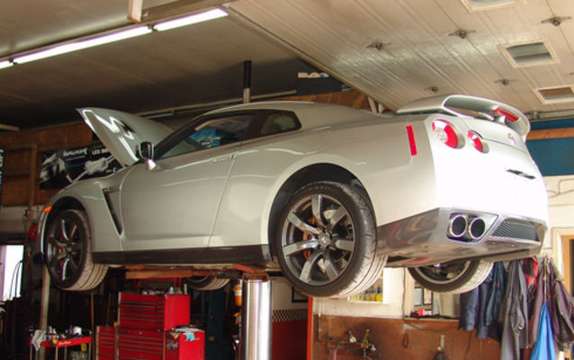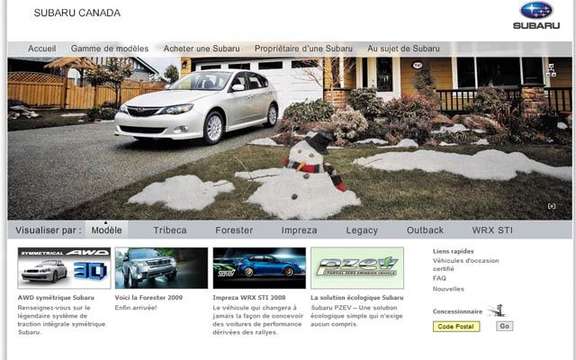Decline in annual maintenance expenses of vehicles in Canada
The average annual expenditure for the maintenance and repair of vehicles have declined by about 7% compared to 2008, according to the study, 2009 index fidelity Canadian customers ("2009 Canadian Customer Commitment Index StudyMS") published today by JD Power and Associates.
The study shows that the average annual spending rose from $ 920 in 2008 to $ 856 in 2009. Moreover, the proportion of customers who say "go to the cheapest possible place for this type of service "jumped 17% in 2008 to 23% this year.
"In a difficult economic environment, the owners of a vehicle seem to procrastinate the non-essential maintenance work or find the cheapest service possible," says Darren Slind, Principal and Chief Executive Director of the Canadian sector automotive JD Power and Associates. "In the long run, this could compromise the reliability of the vehicle, but consumers face has other priorities in the short term. "
The study, as amended in 2009, measures attitudes towards the service, the degree of satisfaction and loyalty of owners whose vehicles have 3 to 12 years. Overall satisfaction is measured based on five important factors related services obtained: services precedant the maintenance or repair; competence of the service advisor; installations; quality of work performed; and return or regain control of the vehicle. The study evaluates customer satisfaction has services received as well as dealers of secondary market institutions.
NAPA AUTOPRO, with an overall score of 876 on a scale of 1,000 points ranks first in terms of the satisfaction of Canadian consumers regard the auto services. NAPA is AUTOPRO demarque particularly in services previous work, the competence of the adviser, the quality of work and the return of the vehicle. OK Tire (858 points) and Pennzoil (851 points) are respectively second and third in the standings.
The study also demonstrated that dealers continue to lose market shares to suppliers of secondary market. Overall, these account for 59% of market services, whose value is estimated at $ 11.2 billion per year for vehicles that have from 3 to 12 years, while their share was 57% in 2008 .
"Although a shift of two percentage points may seem small, it is equivalent all the same has an annual revenue loss of more than $ 220 million for the dealers," says Slind. "Since sales of new vehicles were down by more than 16% so far this year in Canada, dealers must rely more than ever on the service and the sale of parts. We expect they will react energetically this year to regain market share lost this. "
In terms of segments, suppliers of secondary market recorded a good score of rating services precedant work (notably easier to take an appointment and practicality schedule for the filing of vehicles) and the return of vehicles ( including schedules and explanation of the work and costs). Dealers for their part are distinguished by the quality of their facilities (convenience, comfort, cleanliness, etc.)..
"Customers pay more attention to the competence of the staff and the quality of the process and the quality of the premises, and this is the challenge that dealers will face," says Slind. "In fact, more than half of all owners, 53% go elsewhere while work is being done on their vehicle. "
Although this is the quality of services that most affects the degree of overall satisfaction, customer expectations regarding competence to advise them have increased greatly over the past year. Councillor now accounts for 18% of the degree of overall satisfaction when it accounted for only 14% in 2008.
"The importance of the service advisor can not be underestimated since it plays a very large role in the quality of the overall customer experience," says Mr. Slind. "The best advisers are excellent communicators, both with clients and technicians. If the advisor is doing a good work, the customer better understands the value of services, which will make him very likely to recommend the establishment or his advisor and works ay back. "
The study also updates the following trends regarding customer centers auto services:
When asked customers how service providers could make more convenient opening hours, nearly 40% report longer hours during the week (in the evening).
Customer satisfaction is much higher if the service advisor provides advance a full explanation of the work performed (overall satisfaction index of 832) if it does not give such an explanation (satisfaction index of 625).
The study of 2009 index loyalty of customers is based on responses from 14,388 owners of the country whose vehicles have 3 to 12 years. It was conducted between April and June 2009.
NAPA AUTOPRO wins the prize for customer satisfaction among Canadian automotive service providers







